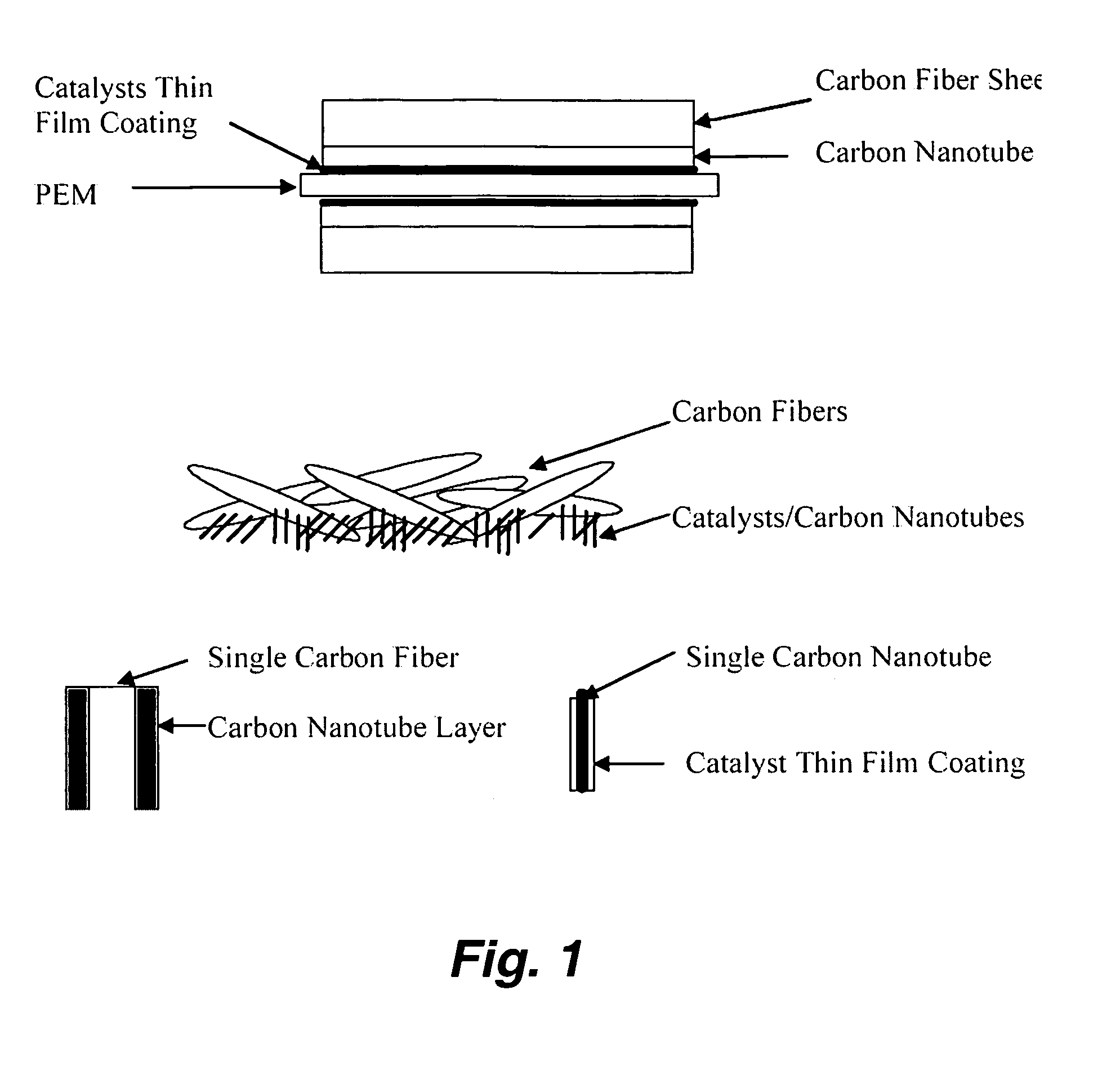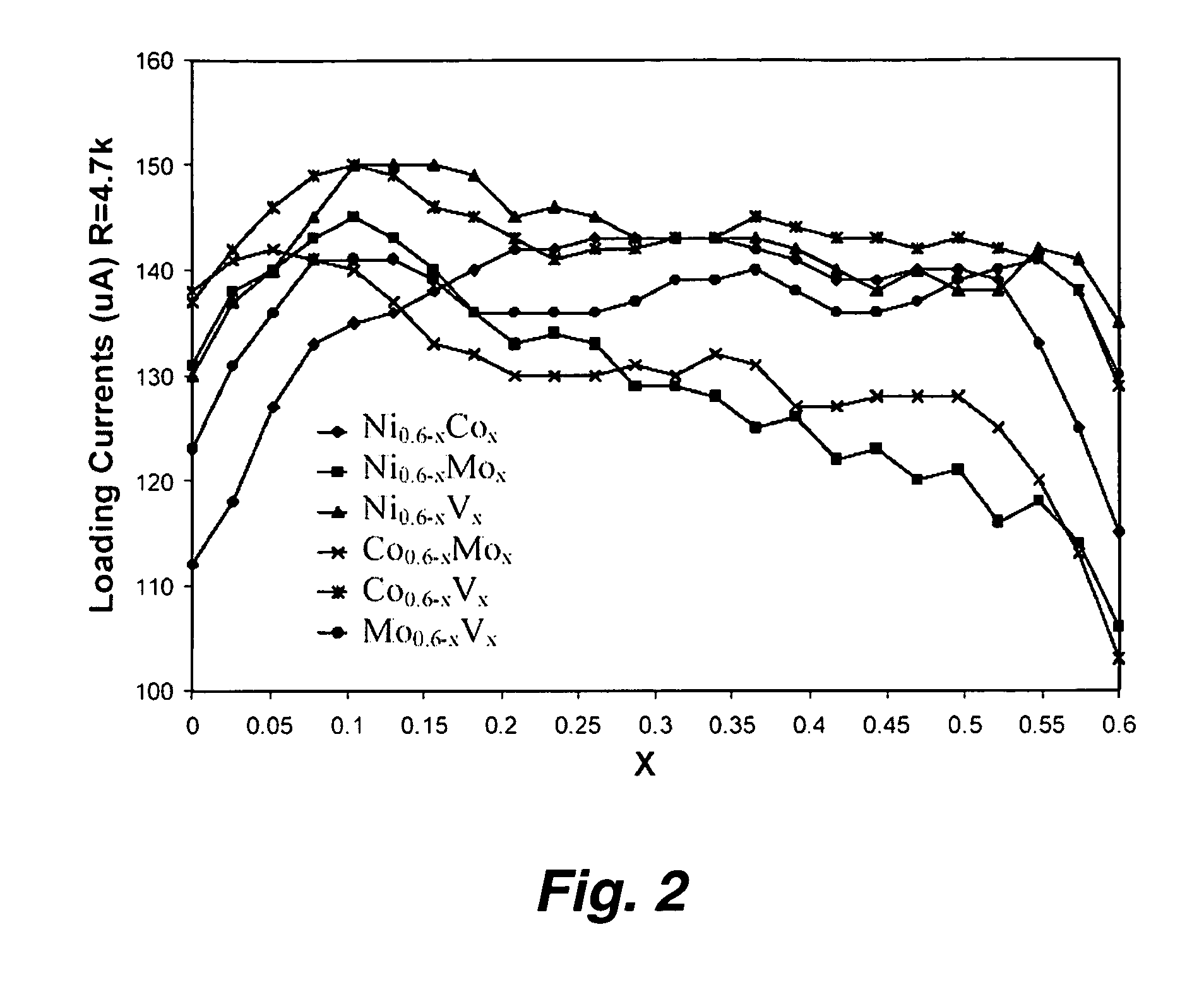Low platinum fuel cell catalysts and method for preparing the same
a fuel cell catalyst and low platinum technology, applied in the field of electrochemical catalysts, can solve the problems of lack of appropriate materials, difficulty in developing early scientific experiments into commercially viable industrial products, and difficulty in achieving the effects of high catalyst efficiency, high catalyst efficiency, and high catalyst efficiency
- Summary
- Abstract
- Description
- Claims
- Application Information
AI Technical Summary
Benefits of technology
Problems solved by technology
Method used
Image
Examples
example 1
[0094] Pt alloy thin film catalysts were processed through multiplayer depositions and post diffusion annealing. For alloy films with a fixed composition the thickness ratio calculated from atomic weight of the selected elements will be used to control a desired composition. For alloy films with continuously changed composition, the thickness gradient profiles were generated during the deposition process. The ion beam sputtering depositions were carried out under a typical condition of 10−4 torr and room temperature with pure metal targets. Typical total thickness of multilayers is about 100 Å. Post annealing for inter-diffusion were carried out at 700° C. for 12 hours under 10−8 torr vacuum. The commercial carbon fiber papers were used as substrates for most of the composition studies.
[0095] The carbon nanotubes deposited on the carbon fiber papers were used for enhancing the catalyst surface area and providing a micro gas-diffusion structure. The growth procedures for carbon nano...
PUM
| Property | Measurement | Unit |
|---|---|---|
| Length | aaaaa | aaaaa |
| Length | aaaaa | aaaaa |
| Fraction | aaaaa | aaaaa |
Abstract
Description
Claims
Application Information
 Login to View More
Login to View More - R&D
- Intellectual Property
- Life Sciences
- Materials
- Tech Scout
- Unparalleled Data Quality
- Higher Quality Content
- 60% Fewer Hallucinations
Browse by: Latest US Patents, China's latest patents, Technical Efficacy Thesaurus, Application Domain, Technology Topic, Popular Technical Reports.
© 2025 PatSnap. All rights reserved.Legal|Privacy policy|Modern Slavery Act Transparency Statement|Sitemap|About US| Contact US: help@patsnap.com



